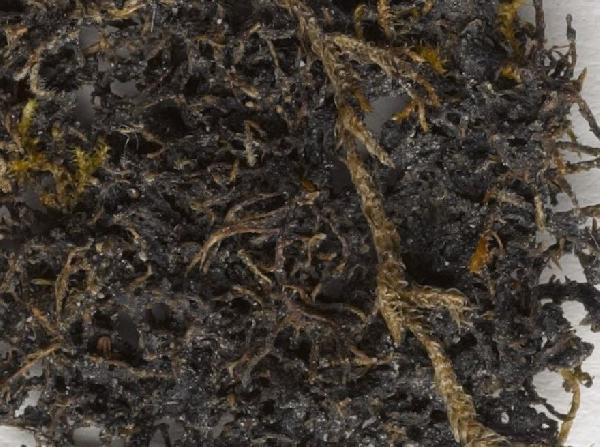Micarea cyanescens Poelt & Döbbeler
Bot. Jahrb., 96, 1-4: 339, 1975
Synonyms:
Distribution:
Description: Thallus crustose, inapparent, reduced to a few algal cells in the surroundings of the apothecia, developing on moribund leaflets of the moss Campylium halleri. Apothecia micareoid, whitish, translucent and gelatinous when wet, sessile, convex, 0.12-0.25(-0.42) mm across, without a distinct proper margin. Epithecium scarcely differentiated from the hymenium; hymenium colourless, K-, N-, I+ deep blue; paraphyses thread-like, branched and sparingly anastomosing, 1-1.5 μm thick; hypothecium colourless. Asci 8-spored, broadly clavate, thick-walled, the outer wall I+ deep blue, the I+ blue tholus with a I+ dark blue tube structure, (32-)35-45(-50) x 15-18(-20) μm. Ascospores 1-septate, not or only slightly constricted at septum, with slightly unequal cells, hyaline, ellipsoid, (12-)14-18 x 5.5-6.5(7) μm, with rounded ends. Photobiont chlorococcoid. Spot tests: thallus K-, C-, KC-, P-. Chemistry: unknown, probably without lichen substances.Note: on moribund mats of the moss Campylium halleri overgrowing calcareous rocks, mostly in shaded-humid situations such as on N-exposed surfaces; rare, but perhaps overlooked, being known from a few localities from the montane to the subalpine belt in the Eastern Alps (Austria); to be looked for in the Italian Alps. The generic placement is not certain.
Growth form: Crustose
Substrata: soil, terricolous mosses, and plant debris
Photobiont: green algae other than Trentepohlia
Reproductive strategy: mainly sexual

Predictive model

Detail from: https://gzu.jacq.org/GZU000286372
GZU000286372 - J. Poelt -Date 1974-09-29
Location Germany / Bayern
Label Chiemgauer Alpen, Oberbayern: Nordseitige Kalkfelsabbrüche am Wege von der Schlechtenberger Alm nach Hohenaschau ; Alt. 900 m - 1000 m
Habitat Nordseitige Kalkfelsabbrüche
auf: Campylium halleri HOLOTYPE
Growth form: Crustose
Substrata: soil, terricolous mosses, and plant debris
Photobiont: green algae other than Trentepohlia
Reproductive strategy: mainly sexual

Predictive model

 INDEX FUNGORUM
INDEX FUNGORUM
 GBIF
GBIF

